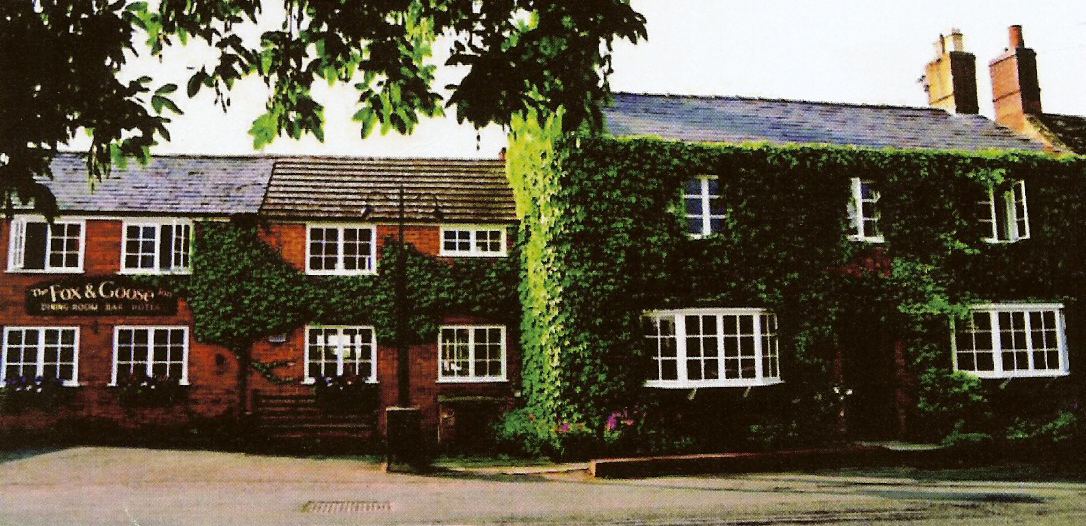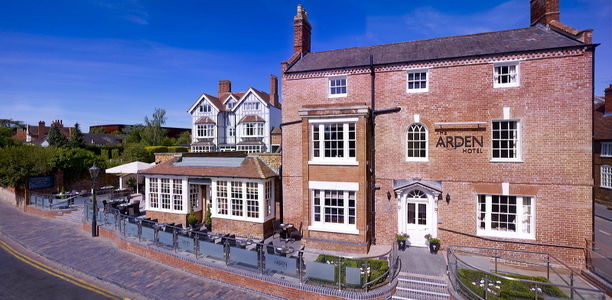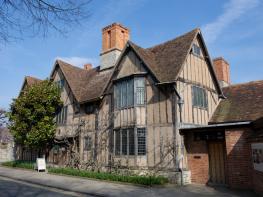Robbie’s Barn offers two-bedroom, self-catering holiday accommodation in south Warwickshire, and…
Around Compton Verney

5.5 miles (8.8kms)
About the walk
The splendid Compton Verney House dates back 300 years to the early 18th century and is a Grade I listed residence built by Richard Verney, 11th Baron Willoughby de Broke. It was later remodelled, with the interiors designed by Robert Adam in the 1760s. Situated in fine parkland, the grounds were landscaped by Capability Brown in 1769. The estate extends to over 5,000 acres. Richard Greville Verney, the 19th baron, sold Compton Verney in 1921 and the estate passed to the soap magnate Joseph Watson. Sadly, Watson’s tenure was short. He died from a heart attack a year later in 1922 while out hunting with the Warwickshire foxhounds in the surrounding countryside.
Art in a country house
The Army requisitioned Compton Verney during the Second World War. By the end of hostilities in 1945, the house was empty. In 1993, another powerful businessman acquired the estate. This time it was Sir Peter Moores, the Littlewoods millionaire. Having rescued Compton Verney from the English Heritage Buildings at Risk register, Sir Peter implemented various changes and improvements and ultimately transformed the house into a venue for international art exhibitions. Compton Verney became an art gallery in a sumptuous country house at the heart of England.
A suitable setting
Sir Peter was greatly impressed by German art while visiting Europe as a young man and his interest extended to the antique treasures of China. He felt so passionately about the subject that he set about finding a suitable setting in the English shires, in which the public could share his love of art. His strong interest remains the key theme at Compton Verney and the striking collections on show include the work of Sir Joshua Reynolds and many examples of British folk art. There are six permanent collections within the house.
Walk directions
With the church on the right and the village hall to your left, follow the lane through the centre of Combrook. By the entrance to Chestnut House, turn right through a gate and head uphill on a path. Make for the top left corner of the field by trees and enter woodland. Keep the road parallel on your right and when it bends sharp right, keep ahead on a wide grassy path through the trees.
As the path sweeps right, continue straight on. Through the trees Compton Pools gradually creep into view. On reaching the edge of a field, go half right, in line with gate pillars down at the road. The splendid façade of Compton Verney is visible down by the water. Cross the road and the entrance to Compton Verney and follow the path to the right of the drive, over a footbridge.
Skirt the car park, keeping it on the left, following the waymarks. Make for a kissing gate leading into a field and follow the obvious path ahead to a gate in the far boundary. Compton Pools are visible down to the left. Head for the next gate, exiting to the road. Cross it to a bridleway and go straight down the field towards trees. In the corner pass through a hedge gap on the right, keep left in the next field, cross a brook and follow the path around the left perimeter of the next pasture with a ditch beside you. Keep to the path and eventually draw level with the trees of Lighthorne Rough.
On reaching the field corner, join the access road to Hillfields and turn left. At the T-junction turn left and follow the road to the next junction. Cross it to follow a bridleway track and at the next gate, keep ahead within sight of the pools at Compton Verney, avoiding a private track on the right. After 30yds (27m) go through a second gate and keep to the right of the house. Follow the track as it gradually curves right between a cottage on the left and the buildings of Home Farm on the right.
Pass the main farmyard and follow the track as it bends left. Go through a gate by a cattle-grid, pass Compton Verney Lodge and reach the road. Turn left, walk down the grassy verge and turn right at a sign for Park Farm. Follow the drive between wooden fences and 50yds (46m) before it bends right by several houses, go through a gate on the left. Follow the bridleway as it runs parallel to the drive, go through a gate and head across the field to reach a waymark. Keep ahead with the pools visible again on the left.
Follow the bridleway as it runs down by the water’s edge, pass through a gate into woodland and beyond the trees, pass a footpath on the right. There are pleasant views on this final stretch over the rooftops of Combrook. Cross a stream, make for the road and turn right, back to the centre of the village.
Additional information
Parkland and farmland paths, stretches of road
Rolling Warwickshire countryside and parkland
On a lead on open farmland, along country roads and in the vicinity of Compton Verney
OS Explorer 206 Edge Hill & Fenny Compton
In the vicinity of the village hall and church
At Compton Verney (when open)
WALKING IN SAFETY
Read our tips to look after yourself and the environment when following this walk.
Find out more
Also in the area
About the area
Discover Warwickshire
The sparkle of sunlight on a gentle river as it meanders through beautiful countryside; the reflections of sailing boats on a lake; relaxing with a pint in the garden of an old English pub in a picturesque village; brightly coloured narrow boats making their way through a flight of lock gates; the imposing silhouette of an historic castle. These are the scenes that make Warwickshire a delight.
There may be few seriously high hills in this fertile plain, but it is an area full of attractive walking in rolling countryside, blessed with a fascinating history and wonderful places and buildings to visit. This is Shakespeare’s county, and the footprint of the famous Bard appears almost everywhere. He was born and brought up around the beautiful Warwickshire town of Stratford-upon-Avon, and many of his plays draw upon his own experiences in the area.
Warwickshire has a history that embraces the Civil War, castles and large country houses are scattered over the county. Warwick Castle is the home of the Earl of Warwick, Kenilworth Castle was a stronghold for lords and kings of England in the 11th and 12th centuries, and so the list goes on.
Nearby stays
Restaurants and Pubs
Nearby experiences
Recommended things to do
Why choose Rated Trips?
Your trusted guide to rated places across the UK
The best coverage
Discover more than 15,000 professionally rated places to stay, eat and visit from across the UK and Ireland.
Quality assured
Choose a place to stay safe in the knowledge that it has been expertly assessed by trained assessors.
Plan your next trip
Search by location or the type of place you're visiting to find your next ideal holiday experience.
Travel inspiration
Read our articles, city guides and recommended things to do for inspiration. We're here to help you explore the UK.













